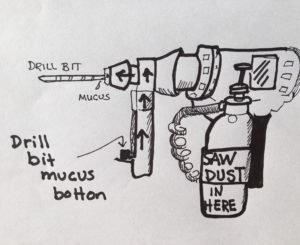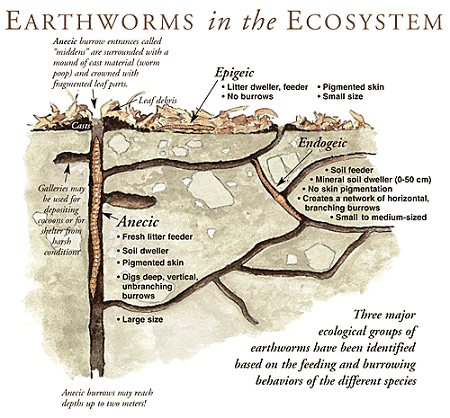Problem:
Drills often leave a big mess!
Biomimicry Idea:
An earthworm is helpful to us because it burrows down in the earth and gives the soil more air. This way the soil becomes loosened with more pathways for water and air to enter plant roots. This can make our plants get stronger.

Worms can crawl both backward and forward in the soil. Similar to a hydroelectric drill, it too can travel backward and forward through both wet and dry environments.

The drill below is inspired by how earthworms ingest and excrete dirt and organic matter. 
It also uses the idea of how a worm has mucus on its skin to stay moist and help absorb dissolved oxygen into its body.
This drill has a separate tank with an attachable vacuum cleaner that suctions out the saw dust, just like a worm who ingests and excretes the soil and its processed organic matter. Worms also coat themselves in mucus to help the dissolved oxygen pass through their skin and into their blood. This drill will mimic an earthworm by spraying some lubricant on the drill bit to make it easier to drill through the material. This “mucus” lubricant will be supplied by a small side tank on the drill that releases the “mucus” with the push of a button.
Worm tunnels also help to hold soils in place and stop erosion. Very much like this aerated pot below , it holds the soil in place but lets water and air reach the plant roots.

How does nature find a way to use earthworms?
Earthworms burrow in, out and around plants and trees. This sends fresh air and even helps rain water find its way to the root systems of all plant life. Earth worms are all over the world. In Australia an earth worm can grow up to 2 meters long. Here in the U.S. they only get as big as 30 center meters. They can live up to 8 years. (if they are lucky enough not to be eaten)

Source: www.biokids.umich.edu/critters/Oligochaeta/www.oepos.ca.uky.edu/outreach/Awake/kySegementedworms/Earthworm
